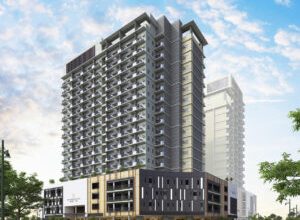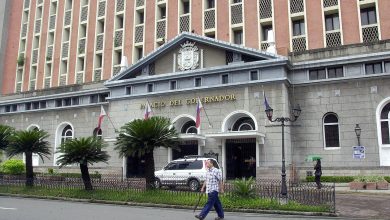Argentina and the Philippines: Similar development struggles

ALTHOUGH the economies of Argentina and the Philippines are very different, the two share structural problems that make both nations’ development a complex process. The election of Javier Milei as the new president elect of Argentina, gives us the opportunity to review the differences and parallels between the two economies.
Milei is a radical libertarian populist economist with authoritarian tendencies. His proposals range from the dangerous in economics (dollarization, closing the Central Bank, a drastic reduction of social spending) and social issues (curtail human rights and democratic advances, loosen gun ownership laws, and the elimination of all those institutions that would have any relationship with his two biggest obsessions: the State and the “political caste”) to the insane: institute a free market for human organs. His election has shocked many in Argentina, but the reasons for his rapid rise are not hard to find. The Philippines has also had its share of populist presidents with also questionable ideas and behavior.
Argentina’s economy stagnated over the last decade, with an average annual rate of GDP growth of about 0.2%, and with an accumulated inflation of approximately 450%, reaching 140% on an annualized basis in October. Poverty has also soared. The poverty incidence increased from about 25% a few years ago to about 40%, when measured by the national poverty line. However, Argentina, with a population of about 46 million, is not a poor country. By the World Bank’s definition, it is an upper middle-income country with a GDP per capita of almost $12,000, about three times that of the Philippines. Argentina’s poverty rate is 2.5% by the $3.65 per day World Bank measure. The equivalent rate for the Philippines is 17.8%.
The frustration that led to Milei’s election is encapsulated in the phrase attributed to the Nobel Prize winner Simon Kuznets, who said that there are four types of countries: developed, underdeveloped, Japan, and Argentina. Japan had everything to be an underdeveloped economy and yet it became rich. Argentina was the opposite. At one point in the late 19th and early 20th centuries, it was one of the richest nations in the world. At the time, it seemed that Argentina was on track to develop a vigorous and dynamic industrial sector, including some niches in advanced technologies. It failed. Argentina’s promising prospects evaporated during the second half of the 20th century, as Western societies lost manufacturing dynamism, and the manufacturing base of the East Asian countries expanded. Then came China. Argentina became essentially an exporter of commodities, and soybean exports to China became central to keeping the current account in balance.
The Philippines was also a candidate for success sometime in the 1960s and early 1970s. Many thought it could follow the steps of Japan and South Korea. It also failed to industrialize; the 1980s was a lost decade; and it was not part of the East Asian Miracle. It was a weak exporter because it did not develop a manufacturing sector. It took some time for the country to start registering consistent positive growth, which was attained since the early 2000s, and which lasted until the COVID-19 debacle. Business Processing Outsourcing became the substitute for the lack of manufacturing, but this could never do what manufacturing did for South Korea.
For both Argentina and the Philippines, the main constraint to sustained economic growth is the need to avoid current account deficits. Both need to import capital goods (that they do not produce) to grow. Imports have to be paid in (typically) US dollars. This means that they need to export to obtain this currency. If they do not, they run into a current account deficit. It is well known that most countries in the world cannot finance current account deficits indefinitely. Under these circumstances, growth will have to be curtailed to keep imports under control. Argentina does well when the prices of commodities go up, as in the first decade of this century; and poorly when they fall, as in the last decade of the 20th century. The only other option to close the current account is to borrow in international markets, which Argentina has done, having received the largest package in the history of the International Monetary Fund in 2018.
In spite of heavy borrowing, Argentina’s central bank’s international reserves dwindled, fundamentally because interest rates were kept low, below the international rate adjusted for the risk of depreciation and default. The persistent depreciation of the exchange rate led to higher domestic prices, and workers, organized in powerful unions, demanded higher wages. Further depreciation was needed to make exports competitive, and a persistent foreign-exchange/wage spiral fueled the inflationary process. In order to reduce inflation, the exchange rate should be stabilized, something that has been done in every successful stabilization policy around the world. Milei’s solution is a more drastic version of that policy, namely to ditch the domestic currency (Argentine peso) and adopt the US dollar.
However, dollarization will not solve all of Argentina’s problems. First, Milei will need to obtain dollars, which is not a trivial proposition. Even if this happens, it will not solve the long-run problems associated with the dependency on commodity exports. In fact, it may very well exacerbate the problem, since adopting a foreign currency would eliminate the possibility of domestic monetary policy and limit fiscal policy, since the government would only be capable of borrowing in foreign currency. Fiscal adjustment would reduce public investment, which has always been central to the processes of economic development, including in the cases of all East Asian successful experiences.
The situation of the Philippines is much healthier across all these fronts: the currency is stable, the central bank has foreign reserves, and inflation in 2023 was nowhere near Argentina’s. Yet, both have a foreign exchange constraint that sets the limit to growth. This constraint is determined by the characteristics of their exports. Argentina’s exports (commodities) have a low-income elasticity of demand (a measure of non-price competitiveness of the export basket). In the case of the Philippines, its exports are largely assembled electronics with low value added, but this is compensated by overseas workers’ remittances. Argentina depends on commodities, while the Philippines, with a more diversified export basket, depends on remittances. What is interesting is that, with their respective trade structures, the Philippines can grow much faster than Argentina. Yet, neither one has a promising development model. Both need to create a model that guarantees sustained growth. This means relaxing the balance-of-payments constraint by manufacturing and exporting products and services with a higher income elasticity of demand: machinery, chemicals, fancy consumer products, and advanced services like modern logistics.
The stabilization of the economy is an imperative if Argentina does not want to stagnate. The next few months will be crucial to see if and how many of Milei’s proposals do materialize, or whether pragmatism prevails. Stabilization will require obtaining surpluses in the current account, since it is unlikely that new loans will be forthcoming, or that the country will receive much portfolio and foreign direct investment. Milei has indicated that a severe fiscal adjustment should be expected next year. Imports will collapse as a result, and together with higher exports, the country may accumulate enough reserves. This may bring in much needed stabilization, but Milei’s liberal economic policies provide no long-term strategy to diversify exports and reindustrialize.
The Government of President Ferdinand Marcos, Jr. in the Philippines is still less than two years into its term. The Philippine Development Plan 2023-2028 targets a growth rate of 6.5% to 8% for 2024-2028. We think the Philippines will not achieve and maintain this high growth rate because it is above the growth rate consistent with balance of payments equilibrium, which we estimate at 6% to 6.5%. This is as far as this economy can grow without forcing deficits. This growth rate is extremely high for world standards (the world economy will grow by about 3% this year and next). Yet, the Philippines needs sustained growth for quite some time to become an upper-middle economy and eventually a high-income economy. Agriculture and wholesale and retail trade, both activities of very low productivity, are the largest employers, with a combined share of 40% of total employment. The creation of a modern manufacturing sector (whose employment share is a meagre 8%) to both export and to develop the domestic economy, is of paramount importance. Philippine agriculture needs a solution, but it is not the solution. All this requires understanding that development will result from upgrading the structure of the economy. This is what will lead to higher productivity and wages, what this economy needs.
Jesus Felipe is a distinguished professor of Economics at De La Salle University. Matias Vernengo is a professor of Economics and Latin American Studies at Bucknell University (Pennsylvania, USA).




